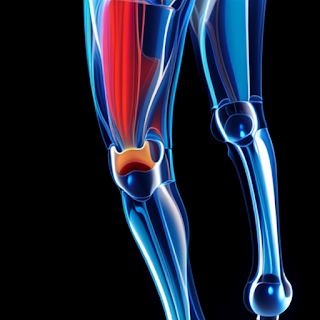Thumb Arthritis: This Joint Pain Is More Common Than You Think
This condition can cause many problems for sufferers, including loss of grip and, of course, a great deal of pain. But what are its causes and is there a remedy?
Thumb arthritis usually occurs after the age of forty and is more common in women than in men. The first symptom of thumb arthritis is usually pain experienced at the base of the thumb when gripping an object or when applying force - say to turn a key or open the lid of a jar. This form of osteoarthritis can make these simple household tasks difficult as it limits the strength and range of motion of the thumb.
Other symptoms may include swelling, stiffness and tenderness at the base of the thumb, decreased strength when grasping objects, enlarged appearance or a 'bony' look to the base of the thumb and general discomfort and aching after use.
The exact cause of this condition is unknown (in common with osteoarthritis generally) but the following factors are thought to contribute to its development:
Being female
Having a job that puts high stress on the thumb joint
Having certain hereditary conditions - joint ligament laxity, defective cartilage etc.
Having past injuries such as fractures or sprains to the basal thumb joint
Being over forty years of age
Having existing rheumatoid arthritis
The basal thumb joint allows your thumb its wide range of movement and consists of the trapezium (the small bone at the base of your thumb), the first metacarpal (the thumb's first bone) and the wrist's scaphotrapezio-trapezoidal joint (STT).
In a normal basal joint, cartilage covers the ends of the bone, acting as a cushion to let the bones glide smoothly over each other. In thumb arthritis, the cartilage deteriorates allowing the bone ends to rub and roughen - the main cause of pain.
Your body's attempts to repair the damage may lead to new bone growth (spurs), which are noticeable on the joint. Each of the repair steps also produces the pain commonly associated with this condition.
Although there is no cure for thumb arthritis, self-care measures do exist. These include specialised splints, prescribed medication or corticosteroid injections. In extreme cases surgery may be the only way to gain a measure of relief.
It would seem then that there is no real remedy for thumb arthritis, any more than other general arthritic conditions, but that early diagnosis and treatment may serve to alleviate the worst symptoms of what can otherwise be a very debilitating condition. Changing lifestyle or work practices may help - any reduction of strain on the affected joint should bring some measure of relief. Too, adapting to the condition by using aids to mobility or dexterity can help, alleviating some of the frustration that is often felt by sufferers of arthritis and allowing the person affected to retain as much independence as possible. Exercise (as opposed to stressing) of the joint can also help to retain its range of motion.
As with all medical issues, it is essential that you consult your doctor if you suspect the onset of any form of arthritis.
http://www.articlesbase.com/non-fiction-articles/thumb-arthritis-this-joint-pain-is-more-common-than-you-think-81501.html
Thumb arthritis usually occurs after the age of forty and is more common in women than in men. The first symptom of thumb arthritis is usually pain experienced at the base of the thumb when gripping an object or when applying force - say to turn a key or open the lid of a jar. This form of osteoarthritis can make these simple household tasks difficult as it limits the strength and range of motion of the thumb.
The exact cause of this condition is unknown (in common with osteoarthritis generally) but the following factors are thought to contribute to its development:
Being female
Having a job that puts high stress on the thumb joint
Having certain hereditary conditions - joint ligament laxity, defective cartilage etc.
Having past injuries such as fractures or sprains to the basal thumb joint
Being over forty years of age
Having existing rheumatoid arthritis
The basal thumb joint allows your thumb its wide range of movement and consists of the trapezium (the small bone at the base of your thumb), the first metacarpal (the thumb's first bone) and the wrist's scaphotrapezio-trapezoidal joint (STT).
In a normal basal joint, cartilage covers the ends of the bone, acting as a cushion to let the bones glide smoothly over each other. In thumb arthritis, the cartilage deteriorates allowing the bone ends to rub and roughen - the main cause of pain.
Your body's attempts to repair the damage may lead to new bone growth (spurs), which are noticeable on the joint. Each of the repair steps also produces the pain commonly associated with this condition.
Although there is no cure for thumb arthritis, self-care measures do exist. These include specialised splints, prescribed medication or corticosteroid injections. In extreme cases surgery may be the only way to gain a measure of relief.
It would seem then that there is no real remedy for thumb arthritis, any more than other general arthritic conditions, but that early diagnosis and treatment may serve to alleviate the worst symptoms of what can otherwise be a very debilitating condition. Changing lifestyle or work practices may help - any reduction of strain on the affected joint should bring some measure of relief. Too, adapting to the condition by using aids to mobility or dexterity can help, alleviating some of the frustration that is often felt by sufferers of arthritis and allowing the person affected to retain as much independence as possible. Exercise (as opposed to stressing) of the joint can also help to retain its range of motion.
As with all medical issues, it is essential that you consult your doctor if you suspect the onset of any form of arthritis.
http://www.articlesbase.com/non-fiction-articles/thumb-arthritis-this-joint-pain-is-more-common-than-you-think-81501.html


I learned a lot from these. Regarding some new treatments.
ReplyDeleteosteo arthritis